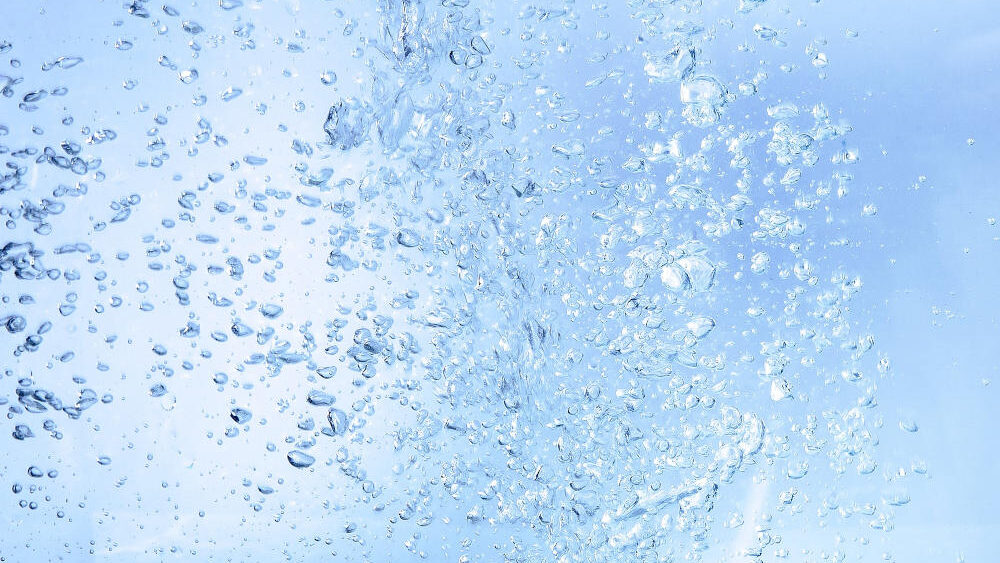Guide
Osmosis water in the aquarium: A guide for aquarium enthusiasts
The right water is crucial for a healthy aquarium. Among the various types of water filtration techniques, the use of osmosis water is a popular choice among experienced aquarists. Water quality plays a crucial role in the successful breeding of Triops and more and more breeders are turning to the use of osmosis water to ensure optimal conditions. But what exactly is osmosis water and why is it so important for aquariums? In this blog article, we will take an in-depth look at this topic.

Osmosis water in the aquarium: What is osmosis water?
Osmosis water is water that has been purified by a process called reverse osmosis. Reverse osmosis is a physical process in which water is forced through a semi-permeable membrane that allows only water molecules to pass through while retaining salts, heavy metals, impurities and other dissolved solids. The result is pure water that is free of most impurities.
The process of reverse osmosis simulates the natural process of osmosis, in which water travels through a membrane to equalise the concentration of dissolved substances on both sides of the membrane. In reverse osmosis, however, this process is reversed by applying pressure to the water to force it through the membrane and retain impurities.
Osmosis water is therefore of high purity and free from many potentially harmful substances such as chlorine, chloramines, heavy metals, pesticides, herbicides, phosphates and nitrates. It is used in various applications, including drinking water treatment, aquaristics, food and beverage production, the pharmaceutical industry and much more. In aquaristics, osmosis water is often used to create optimal conditions for fish, plants and other aquatic life, as it is free of pollutants and the water parameters can be precisely controlled.
Why is osmosis water important in an aquarium?
- Avoidance of harmful substances: Tap water can contain chlorine, chloramines, heavy metals and other harmful substances that can be toxic to fish and invertebrates. By using osmosis water, these potentially harmful compounds can be removed, which promotes the health of the aquarium inhabitants.
- Check the water parameters: Osmosis water has a neutral pH value and a low total hardness (GH) and carbonate hardness (KH). This allows aquarists to precisely control and adjust the water parameters to meet the needs of different fish species and plants. For example, some species of fish and invertebrates require soft and acidic water, which can be easily provided with osmosis water.
- Prevention of algae growth: Osmosis water is free of phosphates and nitrate, which can promote algae growth in the aquarium. By using osmosis water, the risk of unwanted algae growth can be reduced, resulting in a cleaner and healthier aquarium.
- Support for breeding: The use of osmosis water is particularly important for breeders, as it provides a clean and stable environment for rearing offspring. The controlled water parameters make it easier to create optimum conditions for breeding and improve the survival of the young fish.
How do I use osmosis water in the aquarium?
Using osmosis water in the aquarium requires a few steps to ensure that the water quality is optimal for the aquatic inhabitants. Here are the basic steps on how to use osmosis water in your aquarium:
1. Procurement of osmosis water:
You can either produce osmosis water yourself using a reverse osmosis filter device or buy it from shops that operate water treatment plants. Make sure that the osmosis water is of high quality and does not contain any impurities.
2. Treatment of the osmosis water:
Osmosis water is often too soft in its pure form and has a neutral pH value. Depending on the needs of your aquarium inhabitants, you may need to treat the osmosis water by adding mineral salts to increase the total hardness (GH) and carbonate hardness (KH) and adjust the pH value.
3. Mixing osmosis water with tap water (optional):
In some cases, it may be necessary to mix the osmosis water with tap water in order to achieve the desired water parameters. This is particularly important if your aquarium inhabitants require certain water conditions that cannot be achieved with pure osmosis water.
4. Testing the water parameters:
After you have treated the osmosis water and possibly mixed it with tap water, it is important to check the water parameters. Measure the pH value, total hardness (GH), carbonate hardness (KH) and other relevant parameters to ensure that they are within the optimum range for your fish, plants and other inhabitants.
5. Use in the aquarium:
Once the osmosis water has reached the correct water parameters and has been tested for impurities, you can safely add it to your aquarium. Be careful to add the water slowly so as not to disturb the habitat of the inhabitants.
6. Regular monitoring and maintenance:
Regularly monitor the water quality and the health of your aquarium inhabitants to ensure that the osmosis water continues to provide optimum conditions. Carry out water changes if necessary and adjust the water parameters accordingly.
By following these steps and controlling the water quality in your aquarium, you can reap the benefits of osmosis water and create a healthy environment for your fish, plants and other aquatic life.